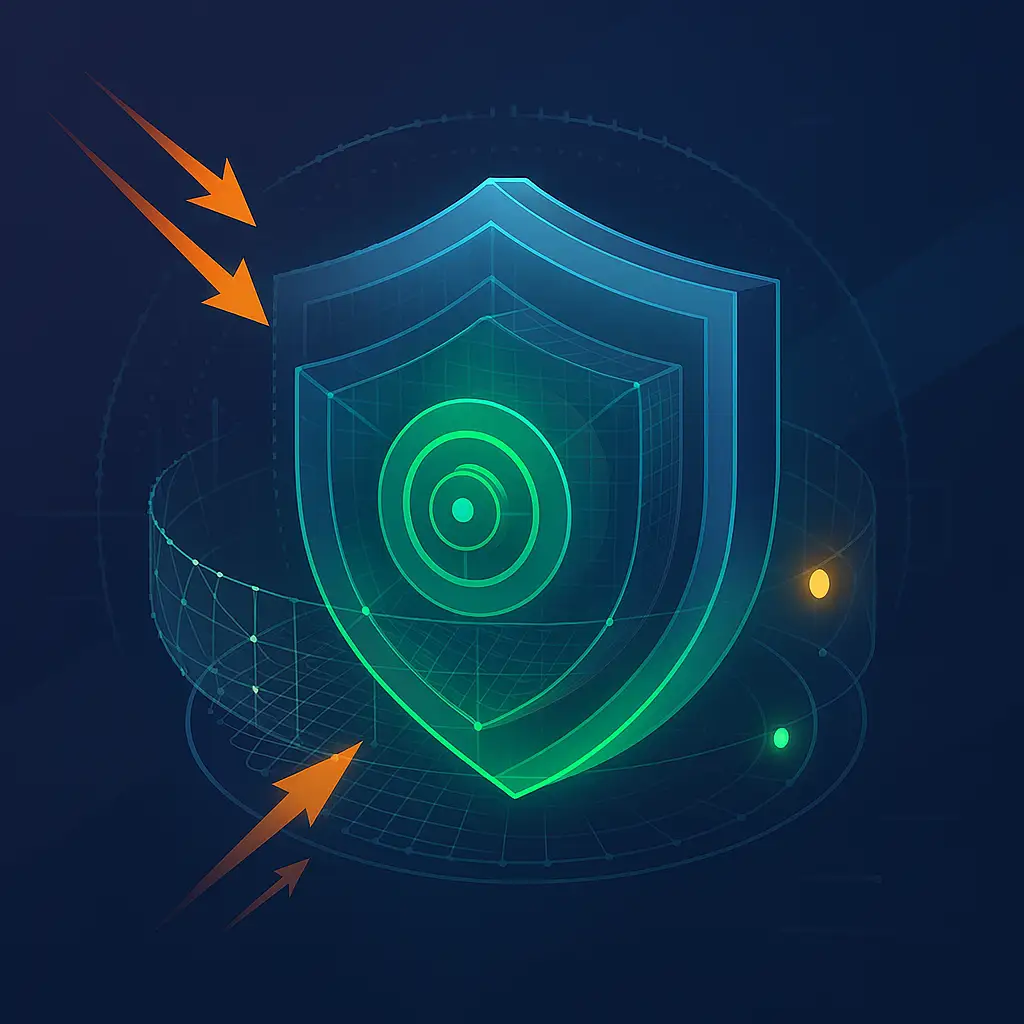In today’s landscape, organizations face increasingly sophisticated threats that demand more than a single line of defense. For most organizations, a standalone firewall or basic antivirus software no longer provides sufficient protection. Defense in Depth—a multi-layered security approach—ensures that if one control fails, others remain to mitigate risk. This strategy not only enhances security but also supports compliance and reduces potential breach costs.

What Is Defense in Depth?
Defense in Depth is a cybersecurity strategy that employs multiple, overlapping defensive mechanisms to protect valuable data and systems. The concept originates from military doctrine but has been adapted to digital security to provide resilient protection against a wide range of threats. In practice, this means deploying security controls across several layers—physical, network, application, and data.
A well-implemented Defense in Depth strategy includes:
- Perimeter defenses such as firewalls and intrusion detection systems.
- Internal security measures like network segmentation and access controls.
- Endpoint protection including antivirus, encryption, and mobile device management.
- Security awareness training to help users recognize and avoid phishing attempts.
According to the National Institute of Standards and Technology (NIST), organizations using a layered security approach experience 40% fewer successful breaches. This way, you reduce risk and strengthen trust.
Core Components of a Layered Defense Strategy
Perimeter Security
The outermost layer of defense focuses on preventing unauthorized access to your network. Firewalls, VPNs, and intrusion prevention systems (IPS) are essential here. These tools filter incoming and outgoing traffic based on predefined security rules. In practice, a robust perimeter defense can block a significant portion of external attacks before they reach internal systems.
Network Security
Once inside the perimeter, attackers often move laterally across the network. Network segmentation divides the network into smaller, isolated zones, limiting an attacker’s ability to access critical assets. Implementing strict access controls and monitoring traffic with tools like SIEM systems further enhances this layer. For example, companies that segment their networks can contain breaches 60% faster than those that don’t—Verizon Data Breach Investigations Report (2024).
Endpoint Protection
Endpoints—laptops, smartphones, servers—are common targets for cyberattacks. Effective endpoint security includes:
- Next-generation antivirus (NGAV) that uses behavioral analysis.
- Encryption to protect data at rest and in transit.
- Regular patch management to address vulnerabilities.
A single unpatched device can serve as an entry point for ransomware. Therefore, maintaining updated systems is non-negotiable.
Application and Data Security
Applications often contain vulnerabilities that attackers exploit. Secure coding practices, regular penetration testing, and web application firewalls (WAFs) help protect this layer. Additionally, data encryption and data loss prevention (DLP) tools ensure that sensitive information remains confidential and intact.
Human Factor: Training and Awareness
Even the most advanced technical controls can be bypassed through social engineering. Phishing campaigns, for instance, accounted for 36% of breaches in 2023—IBM Cost of a Data Breach Report. Continuous security awareness training empowers employees to recognize and report suspicious activities, turning them into a vital layer of defense.
Aligning Defense in Depth with Frameworks
To maximize effectiveness, align your layered security strategy with established frameworks like MITRE ATT&CK or the NIST Cybersecurity Framework. These provide structured guidance for identifying threats, implementing controls, and measuring effectiveness. For instance, mapping your defenses to the MITRE ATT&CK matrix helps identify coverage gaps and prioritize investments.
Organizations that adopt these frameworks not only improve their security posture but also demonstrate compliance with regulations such as GDPR, HIPAA, or CCPA. This way, you reduce risk and strengthen trust.
Why Defense in Depth Matters for Business
Cybersecurity isn’t just an IT issue—it’s a business imperative. A successful breach can lead to financial loss, regulatory fines, and irreparable damage to reputation. Defense in Depth mitigates these risks by ensuring that no single point of failure can compromise the entire organization.
Key benefits include:
- Reduced risk exposure: Multiple layers mean more opportunities to detect and stop threats.
- Lower incident costs: Early detection and containment minimize financial impact.
- Enhanced compliance: Meeting regulatory requirements becomes more manageable with comprehensive controls.
Together we build safer systems.
Implementing Defense in Depth: Practical Steps
- Conduct a risk assessment: Identify critical assets and potential threats.
- Select overlapping controls: Choose technical and administrative measures that complement each other.
- Monitor and test regularly: Use red teaming, vulnerability scans, and security audits to evaluate effectiveness.
- Educate continuously: Keep employees informed about emerging threats and best practices.
This approach creates a digital fortress that adapts to evolving threats.
Defence in Depth FAQ
What is the main goal of Defense in Depth?
The primary goal is to provide redundant protective measures so that if one security control fails, others will still be in place to prevent or mitigate a breach.
How does Defense in Depth differ from traditional security?
Traditional security often relies on a single perimeter defense. Defense in Depth uses multiple layers—physical, technical, and administrative—to protect assets at every level.
Is Defense in Depth expensive to implement?
While initial costs may be higher, the long-term benefits—reduced breach costs, compliance advantages, and protected reputation—often justify the investment. Start with critical assets and expand gradually.
Can small businesses use Defense in Depth?
Yes. Even basic layers—such as a firewall, antivirus, user training, and regular backups—can significantly improve security for small organizations.
How does user training fit into Defense in Depth?
Training is a critical layer that addresses the human element of security. Informed users are less likely to fall for phishing scams or mishandle sensitive data.
What are common mistakes when implementing Defense in Depth?
Common pitfalls include over-relying on technology without updating it, neglecting employee training, and failing to align security measures with business objectives.
Assess your compliance gaps today and build a layered defense that truly protects your organization. Reach out to build a safer architecture together.
No post found!

